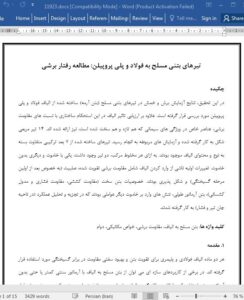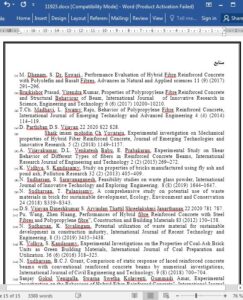Abstract
The research examines the outcomes of shear and flexure testing on reinforced concrete beams made from steel and polypropylene fibre. As well as assessing the impact of fibre in this structural integrity with shear strengthening ratios, certain elements in the characteristics of the cement that is both new and hardened are presented. 14 square beams being put into practice. Tests were made. There were beams produced from 7 distinct mixing dimensions, depending on the kind and the fibre content. For each composite mix there were two beams: one with and the other without stirrups. The primary changes caused by the introduction of fibres were enhanced shear strength, rigidity (especially after the first breaking stage) and ductility. The characteristics of hard concrete (tensile strength, compressive strength and elasticity modules), longitudinal reinforcement concrete, stresses in stirrups, were other factors utilized for the analysis of performance (at the compression and web zone).
1. Introduction
Steel and polymeric fibres both of these materials have been used to strengthen concrete, improving its toughness of fracture resistance. In some structural applications, fibre-reinforced concrete can be utilized with less or even no traditional reinforcement. The fibres could be put to use improve the load-carrying capacity of concrete that has been exposed to shear. Several design techniques that account for the increase in shear strength caused by fibres have been presented. Each approach uses an index based on the material’s hardness to account for the fibre contribution. Each formula, however, employs a different index derived from various test setups [5].











